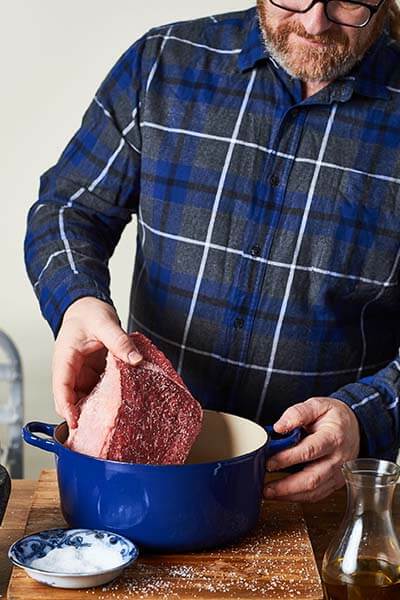Steak can be tricky business. The word itself has become an ambiguous term for a myriad of beef cuts, which are often meant to be treated differently in preparation. We also think it is important to know and respect how many steaks you can expect from one animal. In the modern culinary culture it can start to feel as though steaks grow on trees!
We have created a little cheat sheet for all you Meat House goers. You are always welcome to ask about how to prepare the steaks (and everything else) we sell, but we hope with this little guide you can gain further steak confidence.


Excepteur sint occaecat. cupidatat non proident, sunt in culpa qui officia deserunt mollit anim id est laborum. Sed ut perspiciatis unde omnis iste natus error sit voluptatem accusantium doloremque laudantium, totam rem aperiam, eaque ipsa quae ab illo inventore veritatis et quasi architecto beatae vitae dicta sunt explicabo. Nemo enim ipsam voluptatem quia voluptas sit aspernatur aut odit aut fugit, sed quia consequuntur magni dolores eos qui ratione voluptatem sequi nesciunt. Neque porro quisquam est, qui dolorem ipsum quia dolor sit amet, consectetur, adipisci velit.

Considered “Butcher’s Cut” more modernly than the Hanger, this steak is also referred to as the Oyster Steak. It’s a crazy, little, muscle that looks almost like a spider web due to the striations of fat within the roundish muscle. It sits on the hip and it’s main purpose is to anchor the other leg muscles to the hipbone itself. And, because cows only have 2 hips, there are only 2 Spider Steaks.
Perhaps the original “Butcher’s Cut,” the Hanger Steak was often held back by butchers for their own meals. It is referred to as the, “Hanging Tender” as connects the diaphragm to the backbone and extremely deep in flavor, color and super tender. There are 2 pieces per cow.
You will find this cut tucked into what is referred to as the “Shoulder Clod”. The Should Clod includes the Blade (Flat Iron) as well as the Ranch Steak. The entire cluster of these muscles are flavorful and tender and can be pan fried or grilled. Again, a cow only has 2 shoulders, thus there are only 2 Bistro Filets per animal.
So there you have it! Hopefully this helps you navigate the meat case with ease. But you may want to plan your trip early or call ahead steaks never stay long! Learning to read meat packages and understand what they mean has become an art form in itself. There are many different ways that producers market their meat. This will help you make well informed decisions, even if you are purchasing your meat at the market.